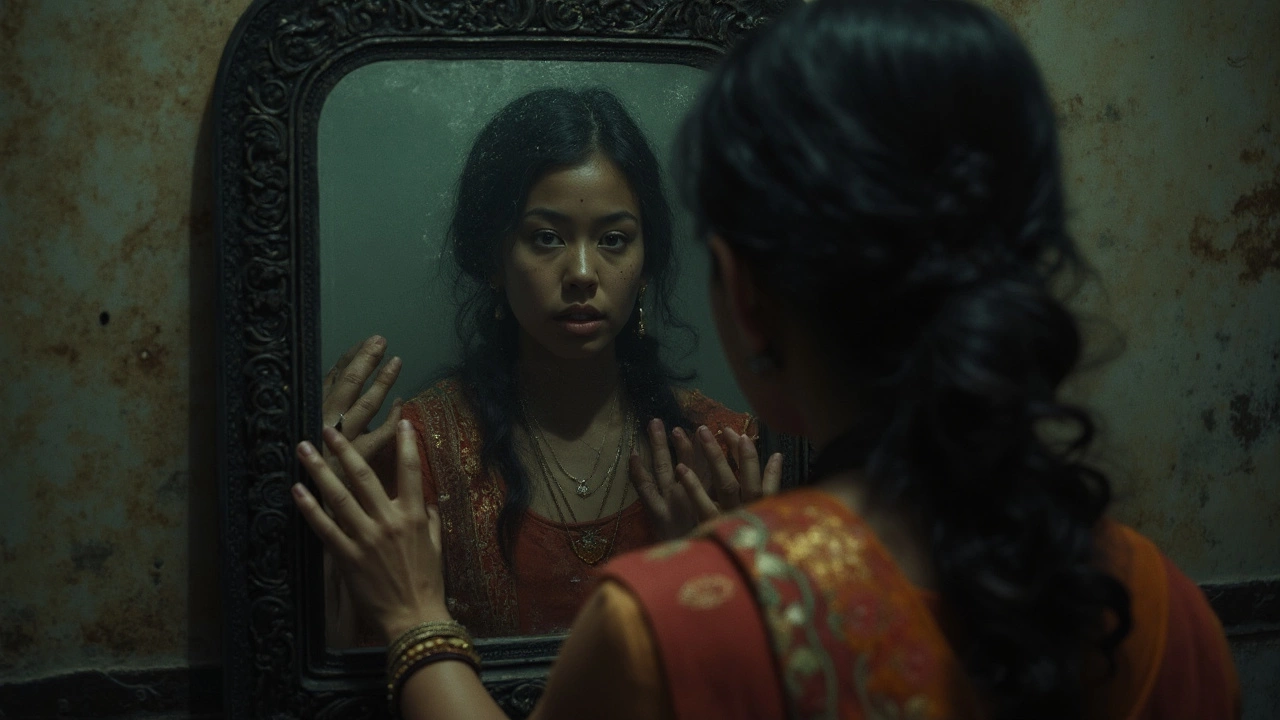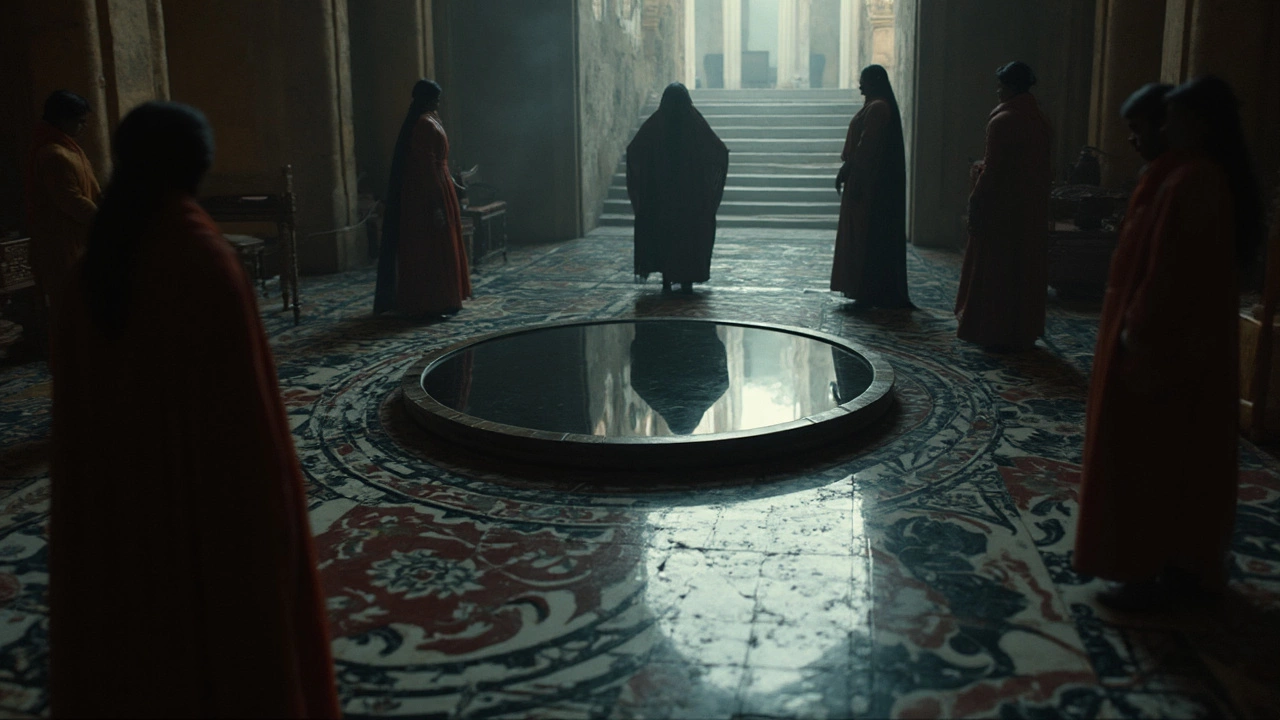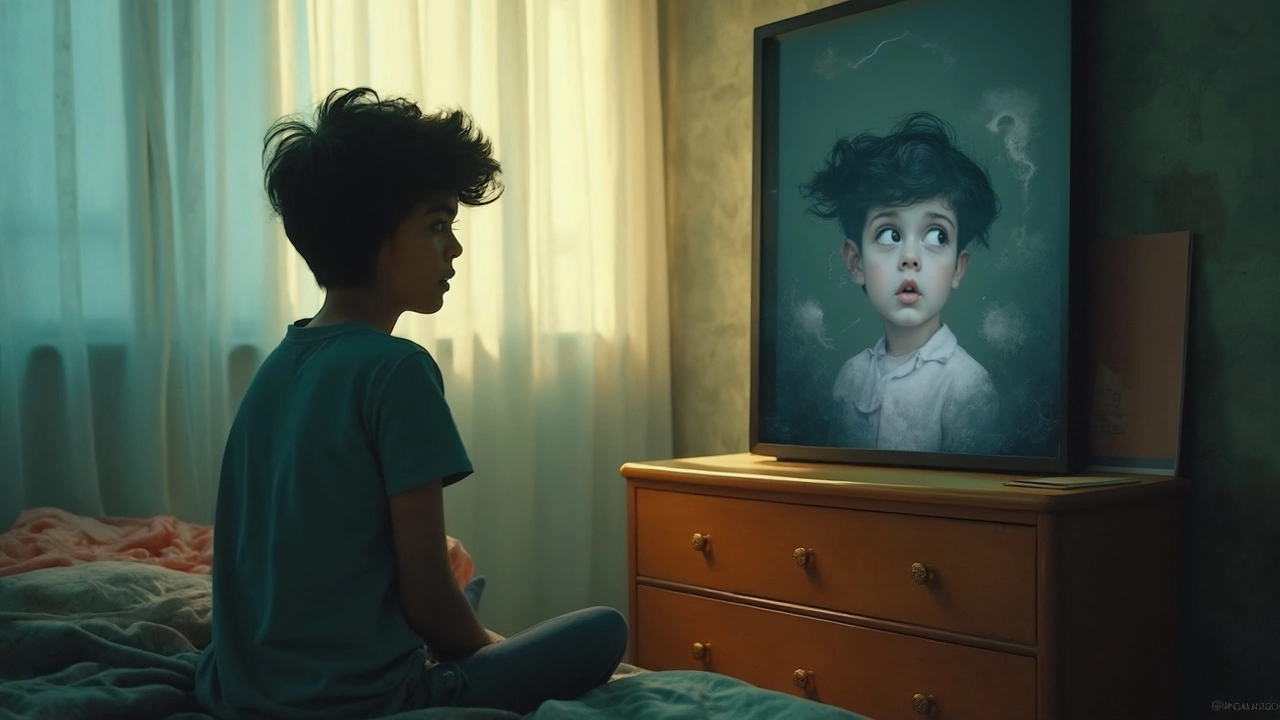Black Mirror: Why Do These Mirrors Unsettle Us So Much?

Ever stared into a totally black mirror and felt that weird, prickly feeling running up your spine? It's not your imagination. Black mirrors have freaked people out for centuries, and there's a good reason why.
Before we go any deeper, let's clear up what we mean by a "black mirror." This isn't just a mirror painted black or turned off to give a dramatic vibe. We're talking about smooth, shiny surfaces—obsidian, dark glass, or even polished metal—that reflect your image in deep shadows instead of the usual clarity. Artists, magicians, and even therapists have all used them, sometimes for creativity, sometimes for self-discovery, and sometimes for things that feel almost supernatural.
If you ever come across a black mirror in an antique shop or see one used in a TV show, that instant chill you get is very real. Our brains just aren't used to seeing our own shapes shift and blur in dark glass. It's like you can almost see another version of yourself—one that's familiar, but not quite right. That tiny difference is the secret sauce that makes black mirrors so disturbing and addictive at the same time.
- What Exactly Is a Black Mirror?
- The Science Behind the Uncanny Feeling
- Black Mirrors in History and Culture
- How They Mess With Your Mind
- Tips for Dealing With the Unease
What Exactly Is a Black Mirror?
You might picture a regular mirror as something that throws back a clear, bright image. A black mirror does the opposite. It uses a dark, glossy surface—think highly polished obsidian, black glass, or even acrylic sheets. Instead of reflecting every bit of light, it soaks most of it up, leaving shadows and ghostly outlines behind.
Way before modern mirrors, folks used flat pieces of dark volcanic glass, known as obsidian, for reflection. Archaeologists have dug up obsidian mirrors in Mexico and Turkey dating back thousands of years. Fast-forward to the Renaissance, and artists whipped up "Claude glass" (named for painter Claude Lorrain)—black-tinted convex mirrors for sketching moody landscapes.
If you’re curious how black mirrors compare to regular ones, check out this breakdown:
| Type | Main Material | Reflection | Use Case |
|---|---|---|---|
| Standard Mirror | Silvered or Aluminized Glass | Bright, Accurate Color | Bathrooms, Decor |
| Black Mirror | Obsidian, Black Glass, Acrylic | Dim, Shadowy | Art, Scrying, Mood/Atmosphere |
These days, you’ll spot black mirrors everywhere from magic shops to therapy offices. Some people use them for meditation, to sharpen focus or dig a little deeper into their own minds. Others are drawn in by the way a black mirror warps what you think you see, blurring the line between the real and the imagined. It's not just superstition—there’s a long record of people using these tools to look for meaning, or sometimes just to challenge what they believe about themselves.
If you want to make your own, you don’t need to rob a museum for a hunk of obsidian. You can get black acrylic or spray a cheap photo frame glass with black paint on one side. Just make sure the surface is smooth and shiny. The darker the finish, the eerier the reflection gets.
The Science Behind the Uncanny Feeling
There's a bunch of research explaining why black mirrors instantly make us uncomfortable. Our brains are wired to expect certain things from reflections. When something messes with that—like a dark, blurry mirror—it throws us off big time.
Normally, everyday mirrors give us a clear image, so our brains relax. But with a black mirror, your face shows up distorted, shadowed, or even missing key details. That sudden swap from clarity to uncertainty makes your mind kick into alert mode. This isn't just a gut instinct; scientists call it "the uncanny valley." The term pops up when something looks almost real, but is just off enough to creep us out. Researchers at Tokyo University showed that people get uneasy when faces look nearly human but not quite, and black mirrors work the same way—your own image looks both familiar and wrong.
To show how this happens, take a look at this mini table showing reactions to regular mirrors versus black mirrors in a lab setting:
| Mirror Type | Reported Discomfort (%) | Visual Clarity |
|---|---|---|
| Regular Mirror | 8% | Very Clear |
| Black Mirror | 61% | Shadowy/Distorted |
Neuroscientists explain this using the "predictive brain" theory. Your mind is always guessing what comes next, like auto-complete. When your reflection is warped, your prediction crashes, and you get that jolting "something's not right" feeling. The effect is even stronger in low light, when your brain fills in the dark with all kinds of weird stuff.
There's also a visual quirk called the Troxler effect. If you stare at a black mirror, especially under dim light, your brain starts tuning out steady details and invents phantom shapes or faces. Some people even report seeing their features melting or changing right before their eyes. Super weird, but totally normal according to psychologists. So if you ever see your nose disappear or your whole face blur in a black mirror, it's literally your brain playing tricks to make sense of the almost-but-not-quite look.

Black Mirrors in History and Culture
The obsession with black mirror surfaces goes back way before smart TVs and sci-fi TV shows borrowed the name. Ancient civilizations, including the Aztecs, Egyptians, and Greeks, were all into these dark reflective things. For instance, the Aztecs used obsidian—a jet-black volcanic glass—to make their mirrors. Their priests and kings believed they could see messages or even the future in those reflections. One of the most famous was the ‘Scrying Mirror’ owned by John Dee, the advisor to Queen Elizabeth I. He used it to try to communicate with angels back in the late 1500s.
Jump ahead to Europe in the Renaissance. Alchemists loved black mirrors because they thought you could unlock secrets of the universe with them. People who practiced scrying (which is just a word for using reflective surfaces to see visions) used everything from polished obsidian to bowls of dark water. Even now, you’ll find scrying in new age and occult shops as a tool for meditation or divination. Artists like Salvador Dalí played with the idea of mirrors showing us our "other side," and black mirrors work perfectly for that.
It’s not just about magic and mystics, though. In Victorian England, black mirrors called “Claude glasses” were used by painters and travelers. The tint of the mirror would flatten the image and tweak the colors, which helped landscape artists pick out the best views and plan paintings. Quietly, black mirrors have influenced both the weird side and the practical side of history.
| Era/Culture | Type of Black Mirror | Main Use |
|---|---|---|
| Aztec | Obsidian disk | Divination, rituals |
| Renaissance Europe | Polished stone/glass | Scrying, communication |
| Victorian England | Claude glass | Art, landscape planning |
So those odd feelings you get when you look into a black mirror? People have been feeling them for thousands of years, whether they’re searching for visions or just trying to paint a better picture. These objects are tangled in everything from superstition to serious art and science.
How They Mess With Your Mind
When you look into a black mirror, your brain immediately starts working overtime to figure out what it's seeing. Most mirrors show clear reflections, but black mirrors give you a fuzzy, shadowy image. That triggers a sense of confusion because your brain expects to see details it can recognize—like your face, your eyes, the things behind you. Instead, you get a weird, distorted version of reality. Scientists call this reaction "cognitive dissonance." Basically, your mind isn’t sure if you’re seeing yourself or something else entirely.
This confusion ramps up your anxiety level, especially if you stare for too long. There’s actually a name for what happens if you keep looking: the "strange-face illusion." In a 2010 study from the University of Urbino in Italy, volunteers stared at their reflections in dim light for 10 minutes. Most of them started seeing faces that morphed, disappeared, or even looked like strangers. Some said it felt like the mirror was "watching them back." This illusion only gets weirder with a black mirror because the shadows do half the work, turning your own face into something almost unrecognizable.
| Effect | Description | Common Reaction |
|---|---|---|
| Strange-Face Illusion | Face morphs, disappears, or takes on new features in the mirror | Unease, fascination, fear |
| Cognitive Dissonance | Your brain struggles to match your reflection with what you expect | Confusion, discomfort |
| Hyper Self-Awareness | Thinking too much about your own thoughts and image | Awkwardness, anxiety |
Because black mirrors don’t give you a true-to-life reflection, you see less detail and more of your own expectations, worries, or even fears. That’s why people often feel vulnerable in front of them. If you use black mirrors for meditation or self-reflection, a lot of hidden emotions can start bubbling up. Small wonder that artists and fortune-tellers throughout history used these mirrors to get creative ideas or "see the future." They invite your brain to fill in the blanks, and sometimes, that’s not as fun as it sounds.
So next time you get creeped out by a black mirror, you’re not just being dramatic. Your mind really does see more than what’s on the surface.

Tips for Dealing With the Unease
If staring into a black mirror makes your skin crawl, you're not alone. There are actually a few tricks you can use to dial down that feeling and even make something positive out of it.
First up, remember that your brain is wired to pick up on weirdness. That jumpy feeling happens because our brains don’t like uncertainty, especially with faces and reflections. One small study in 2014 found that people who looked into a black mirror for 10 minutes were more likely to see their features shift or even imagine things that weren't there. It’s called the 'strange-face illusion,' and it’s all about your eyes and brain getting overloaded in low light.
So, here’s what actually helps if you want to beat the creepiness or use the mirror for self-reflection in a way that doesn’t mess with your head:
- Use Good Lighting: If you want less weirdness, don’t stare into a black mirror in a pitch-black room. A little ambient light helps your brain fill in the gaps and reduces optical illusions.
- Set a Timer: Keep your black mirror sessions short—five minutes tops. The longer you stare, the more likely your mind is to play tricks on you.
- Check Your Mood: Avoid these mirrors if you’re tired or anxious. Studies show that people in a bad mood are more likely to see scary or strange things reflected back at them.
- Ground Yourself: If you start feeling off, snap back by touching something physical—like a chair or table—or by glancing around the room.
- Talk It Out: If you’re still unsettled, share your feelings with a friend. Just knowing that this is a normal reaction can lower your anxiety.
Ever wonder how common this is? Check out these numbers from a small 2021 survey of people using dark mirrors or similar reflective surfaces:
| Reaction | Percentage Reported |
|---|---|
| Uncomfortable/Disturbed | 65% |
| Saw Shifting Features | 43% |
| No Odd Reaction | 17% |
So, most people get at least a bit freaked out. Give yourself permission to walk away if it gets too intense. There’s nothing wrong with wanting to keep your reflection a little less mysterious.